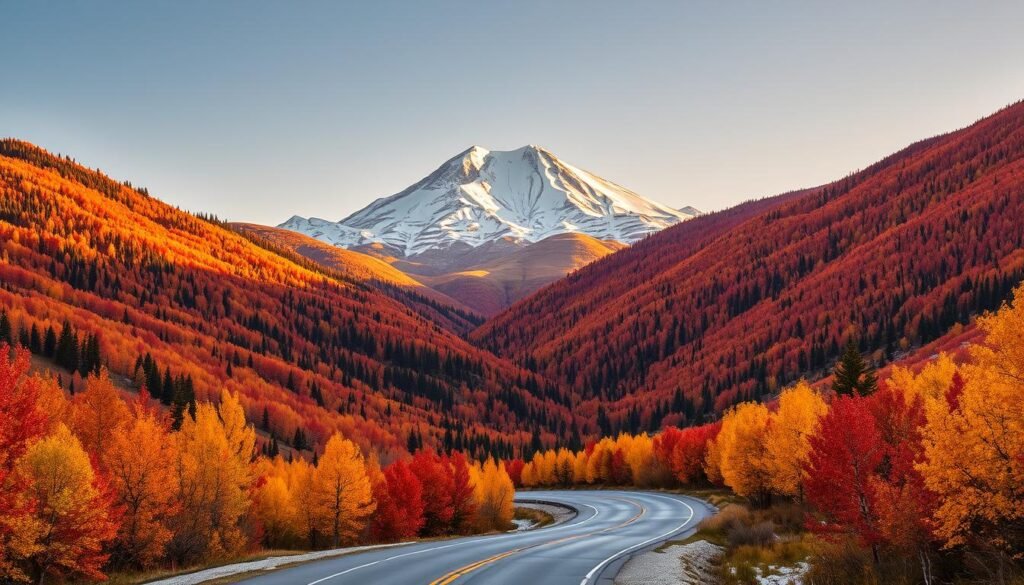Nearly 300 sunny days a year sounds like a dream for outdoor plans, and it is a big reason I pick this state for escapes.
I time my trips around two marquee seasons: summer for hiking and winter for skiing. Still, I often choose spring or late fall when crowds thin and prices fall.
Elevation matters — mountains stay cooler than Denver and can get dramatically more snow. Statewide averages hide extremes: plains see modest snowfall while alpine zones can tally 200–400 inches.
I mix city days with mountain hours to stretch my budget without losing the fun. Picking quieter windows helps me score deals on accommodations and flights and enjoy national parks and mountain towns with less gridlock.
Key Takeaways
- Two high seasons: summer and winter are the busiest for outdoor activities.
- Spring and late fall often offer lower prices and fewer crowds.
- Expect about 300 sunny days a year and big day–night swings; pack layers.
- Mountain weather and snowfall vary widely by elevation.
- Look beyond marquee towns and check accommodations for better deals.
How I Decide the Best Time to Visit Colorado: Seasons at a Glance
I use a simple season map to decide when I’ll head into the mountains or the city.
High seasons are easy to name: June–September for summer trails and mid-December–March for winter powder. Those months deliver prime conditions, but they also bring heavier crowds and higher lodging costs.
Shoulder months—April–May and October–mid-December—are my go-to windows for better prices and more booking flexibility. I often find easier restaurant reservations and less traffic then.
Quick weather and region notes
Colorado averages about 300 sunny days a year. The air is dry and day–night temperatures swing widely, so I always pack layers, sunscreen, and a warm jacket for evenings.
Conditions vary by elevation: July can feel hot in Denver and refreshing at higher towns. October may be mild on the Front Range yet snowy in the high country.things-to-do-in-copenhagen/
When crowds and prices peak
June–September and mid-December–March have peak crowds and peak rates. I book far ahead if I need festival access or guaranteed ski weeks. For lower crowds and better deals, I aim for the shoulder months.
| Season | Typical Months | What I Expect |
|---|---|---|
| High – Summer | June–September | Warm days, busy trails, higher prices |
| High – Winter | Mid-Dec–March | Snow, ski crowds, peak lodging rates |
| Shoulder | April–May & Oct–Mid-Dec | Lower costs, fewer crowds, mixed weather |
The Best Time to Visit Colorado by What You Want to Do
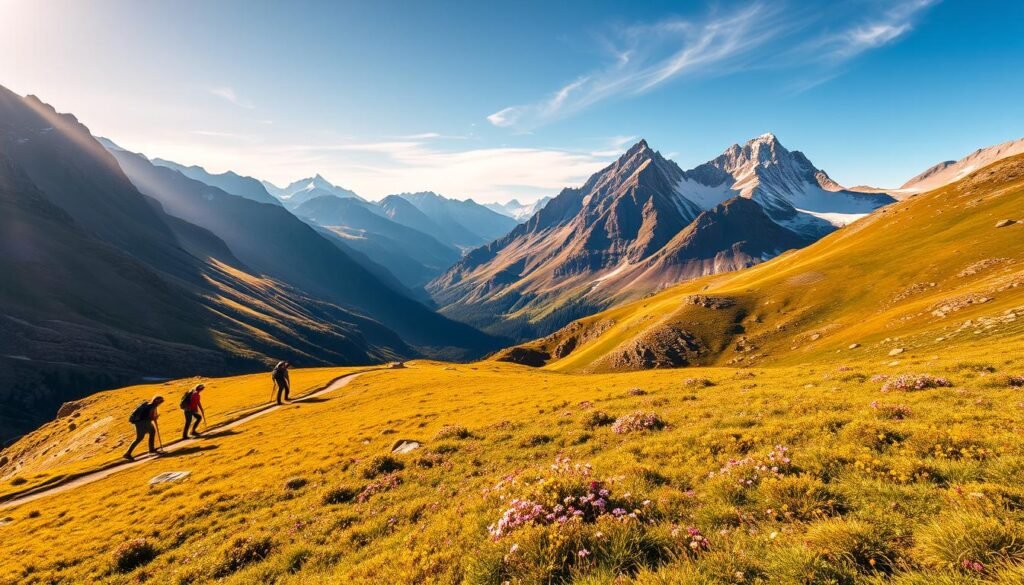
I pick dates by the activity I crave—powder mornings, wildflower walks, or golden aspen drives. Below I map months to typical conditions so you can plan a trip that fits your goals.
Skiing and snowboarding
I target January–February for the deepest, most consistent snow and the highest on-mountain energy. March is my go-to when I want sunnier afternoons and softer temps without losing coverage. Arapahoe Basin and Keystone can open very early and sometimes stretch seasons into June or July.
Hiking and alpine passes
June–October usually offers the widest choice of open trails and big views. I still pack microspikes for May–June and layers for late-season shifts in weather.things-to-do-in-panama-city/
Wildflowers and waterfalls
Valley blooms pop in late spring and early summer; higher meadows peak in July–August. Snowmelt makes late spring the strongest season for waterfalls and rafting.
Fall foliage and city breaks
Mid-September to mid-October is peak for aspens; I bounce elevations to catch the gold. For culture days, winter weekdays and shoulder months give quieter museums and better hotel deals. Check events like Steamboat Springs Winter Carnival for extra local flavor.
“Start hikes early to avoid afternoon storms and keep a flexible plan for shifting weather.”
- I lean January–February for skiing and slide into March for milder conditions.
- Hike June–October for most trail access and alpine views.
- Chase wildflowers by elevation; expect peak waterfalls in late spring.
- Plan aspens mid-September–mid-October; use winter weekdays for city bargains.
| Activity | Prime Months | Why These Months | Notes |
|---|---|---|---|
| Skiing / Snowboarding | Jan–Feb (March softer) | Deep snow, steady coverage | Arapahoe Basin/Keystone may extend season |
| Hiking / Trails | June–Oct | Open passes, clear alpine views | Pack microspikes early; watch storms |
| Wildflowers / Waterfalls | Late spring–mid-summer | Peak bloom and strong runoff | Higher elevations peak in July–Aug |
| Fall Foliage / City Breaks | Mid-Sep–Mid-Oct / Jan–Feb & shoulder months | Aspen color; quieter museums and deals | Steamboat Springs Carnival in winter |
For a broader planning guide, I also consult a handy seasonal overview at travel resources.
Season-by-Season Guide: Winter, Spring, Summer, and Fall in Colorado
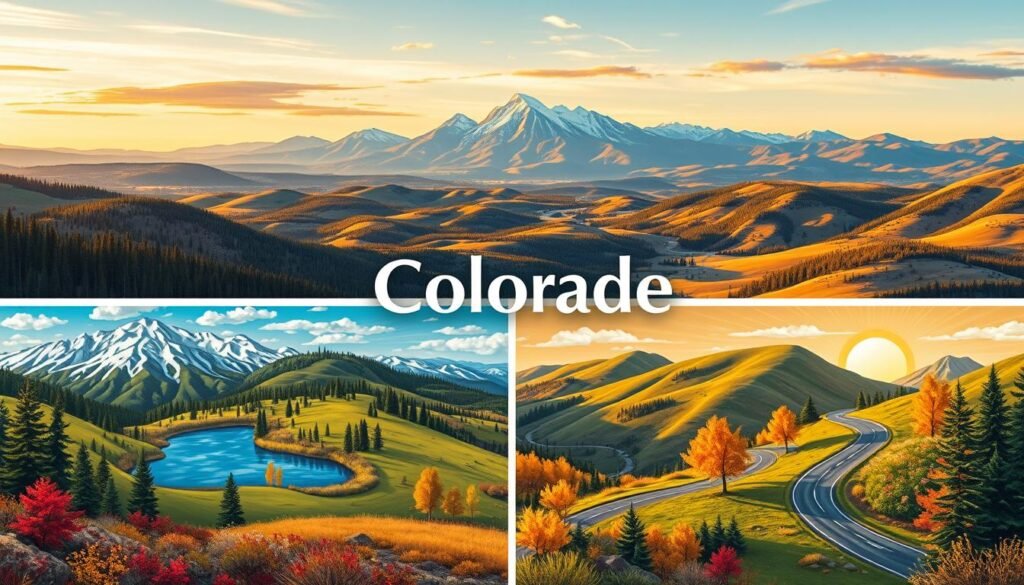
Each season brings its own energy, from deep winter powder to bright fall color.
Winter (mid-December–March)
Winter can be bitterly cold with heavy snowstorms and freezing temperatures, yet bluebird days are common.
I split my weeks between powder hunting and relaxed blue-sky cruising. Resorts shine in January–March, and the mountains can stack 200–400 inches of snow while the statewide average sits near 70 inches.
I watch forecasts for storm cycles and plan backups for whiteout days when slopes shut or visibility drops.things-to-do-in-broken-bow-ok/
Spring (April–May)
Spring is quieter on trails and rich with blooms in lower valleys.
Daytime highs often sit near 50–60°F, and late spring snowmelt fuels waterfalls and prime whitewater runs. I pack for variable mornings and afternoon showers—Denver’s may is typically the wettest month.
Summer (June–September)
Summer brings hot, sunny days and peak trail use.
Many Front Range spots hit 90–100°F, so I start hikes early and treat afternoon monsoon storms as short interruptions. High-elevation hiking and biking feel much cooler and reward steady effort.
Fall (October–mid-December)
Fall delivers crisp days and peak foliage from mid-September to mid-October.
I chase harvest festivals and farmers’ markets, savor crisp hiking weather, and by late fall I begin tuning skis while tracking early resort openings.
“I time plans around how each season shapes the mountains, from slopes and snow to trails and fall color.”
- Plan winter for skiing and heavy snow; keep flexibility for storms.
- Use april may for waterfalls, rafting, and quieter hikes.
- Beat summer heat with early starts and higher-elevation routes.
- Target mid-September–mid-October for foliage and harvest events.
Regions and Elevation: How Denver, the Mountains, and the Plains Shape Your Trip
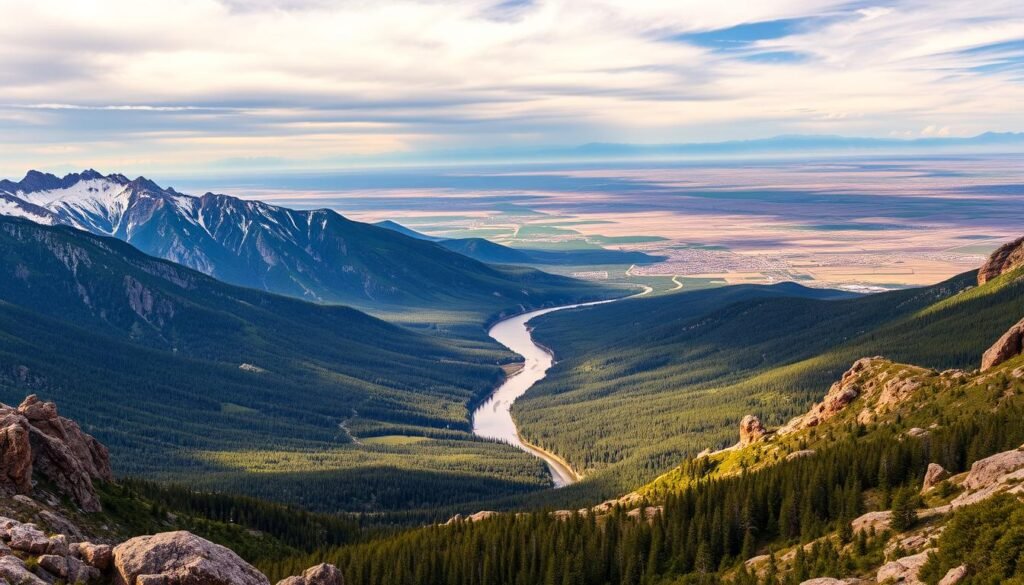
I weigh elevation and logistics before I pick dates, because Denver and the high country often tell different weather stories.You can learn more about best-time-to-visit-yellowstone
Denver vs. high country: The same month can bring warm afternoons on the Front Range and snowy mornings an hour up a pass. I plan by elevation first; that helps me decide whether I’ll chase summer hikes or reliable ski terrain.
Denver vs. high country: Same month, different conditions
I check forecasted temperatures and recent snow totals for higher zones. October can be mild in the city while alpine areas flirt with early winter. That split lets me mix a museum day with a short mountain dash.things-to-do-in-naples-florida/
The I-70 factor and the summer monsoon: Planning around traffic and storms
The I-70 corridor fills on peak weekends, so I shift drive time, take alternate routes, or base near less-used national parks and towns off the main artery.
In summer I respect the Colorado monsoon: afternoon buildups are normal in the mountain zones, so I summit early and schedule indoor plans later. Mountains bank 200–400 inches of snow in big winters, far above the state average, so I stay realistic about road and trail access.
“Plan by elevation, not just by month; it keeps your days productive and safer.”
- I pick areas by the experience I want—cool hikes or warm city strolls.
- I avoid peak crowds on I-70 by shifting routes or base towns.
- I use early starts to beat monsoon storms in the high country.
Crowds, Prices, and Where I Find Deals
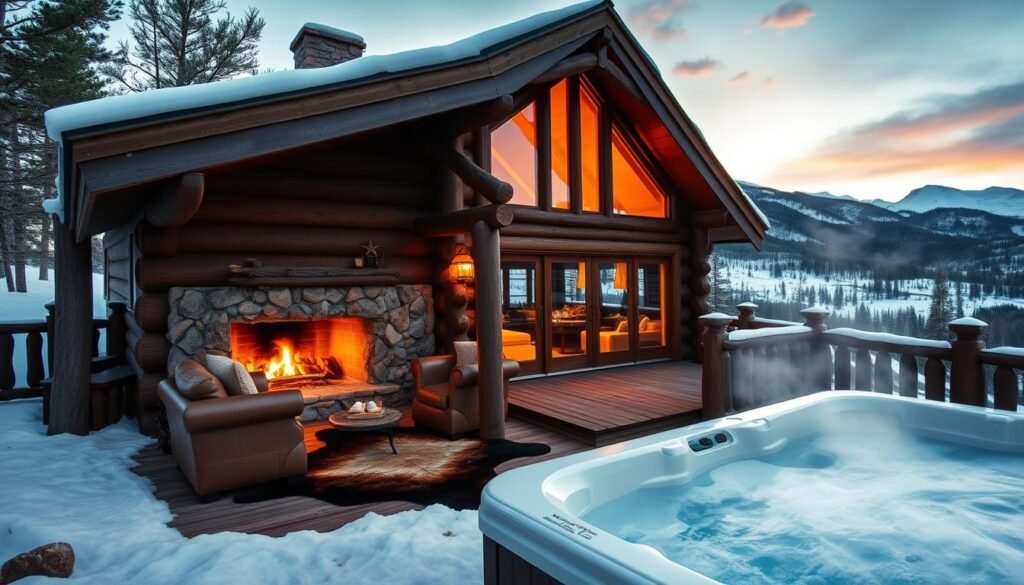
I watch booking calendars and local events closely so I can dodge crowds and save on accommodations. Lodging rates peak during ski season and stay high through summer. They usually dip in April–May and late October–mid-December, which makes those windows my go-to for savings.
Peak pricing: ski weeks, summer weekends, and holiday surges
Major holidays—Memorial Day, July 4, Labor Day, and Thanksgiving—drive sharp demand. Resorts and marquee towns can charge premium nightly rates. I book early when my must-do activity falls in a busy span.
Budget tips: shoulder-season stays, lesser-known towns, and flexible dates
My rules:
- I avoid holiday weeks and big event weekends to skip peak pricing and heavy crowds.
- I base in lesser-known areas instead of Aspen-style headliners and day-trip for highlights.
- I watch Frontier Airlines fares into Denver and shift dates by a few days to find better rooms and rental cars.
- I travel off-peak on I-70 or pick alternate routes to beat traffic when the state is buzzing.
| When | Typical Price | Why |
|---|---|---|
| Jan–Mar (ski) | High | Resort demand and holiday weeks |
| Jun–Aug (summer) | High | Peak travel and festivals |
| Apr–May & Oct–Mid-Dec | Lower | Shoulder-season deals and thinner crowds |
“Shifting a trip by a few days often unlocks better rooms, cheaper flights, and less stress.”
Month-by-Month Highlights and Ideal Windows
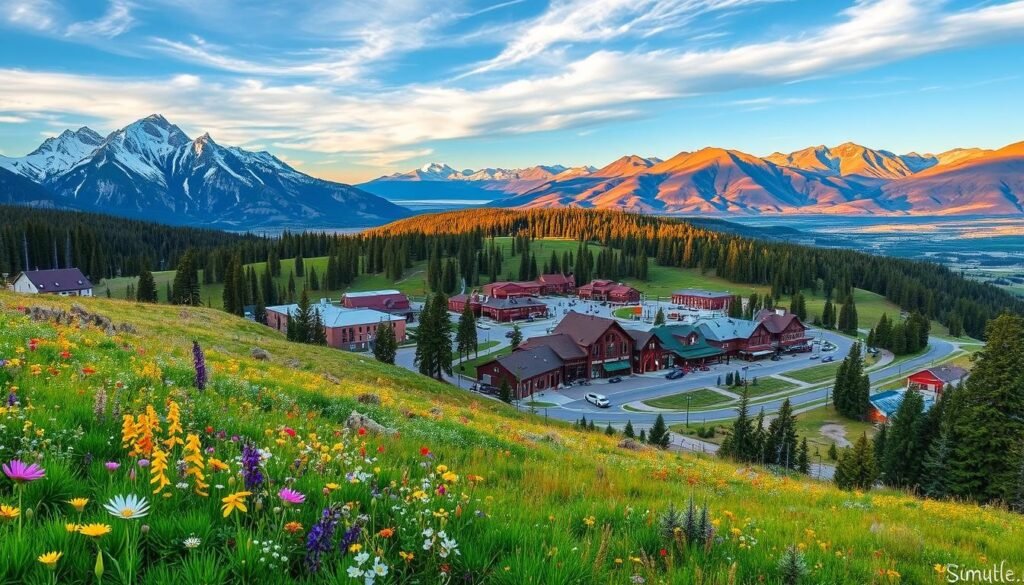
I map the year by what I want from each trip—deep powder, wildflower hikes, or golden aspens—and pick months that match those goals.things-to-do-in-san-diego-this-weekend/
From January powder days to October aspens: What each stretch delivers
January: I lean into deep snow and bluebird days for prime ski and snowboard runs. Watch temperatures and road conditions.You can learn more about best-time-to-visit-costa-rica
February: Powder hunting continues and events like Steamboat Springs Winter Carnival add local flavor; I lock in accommodations early.
March: I trade some snow quality for warmer temperatures and lively après scenes. Lift-served ski still runs while some rates ease.
April–May: I call this a reset. National parks feel quieter midweek, waterfalls surge with snowmelt, and lower trails reopen. Remember Denver’s wettest month falls in May.
June: High-country access expands, wildflowers start lower down, and long days suit big hikes. Expect afternoon storms.
July–August: I rise early to beat heat and monsoon storms, then explore mountain trails and national parks during cooler hours. Book ahead—summer crowds persist.
September: Trails shine and foliage begins higher up. I find calmer crowds and crisp mornings ideal for hiking and scenic drives.
Early–mid October: This is my foliage finale. I shift elevations to catch peak color, enjoy harvest events, and often score better accommodations and quieter parks.
Late October–mid December: I switch to city culture, museum days, and early-season ski when resorts like Arapahoe Basin and Keystone open. Crowds thin before holiday surges.
“I plan each month around conditions and local events so my days match what I want—snow, blooms, or gold.”
- Plan January–February for deep winter sports and festival energy.
- Use April–May for waterfalls, rafting, and quieter national parks.
- Chase foliage mid-September–mid-October by varying elevation.
Conclusion
I wrap up my planning by matching what I want—powder days, wildflowers, or leaf color—with the months that deliver them.You can learn more about best-time-to-visit-iceland
High seasons run June–September and mid‑December–March; shoulder windows (April–May, Oct–mid‑Dec) give fewer crowds and better prices. For winter skiing I favor January–February, with March for milder afternoons. Fall foliage peaks mid‑September through mid‑October, and Denver sees its wettest month in May.
My advice: mix city and mountain days, start early, pack layers, and keep plans flexible for afternoon monsoons or sudden storms. For a seasonal planning guide, see this seasonal overview.


